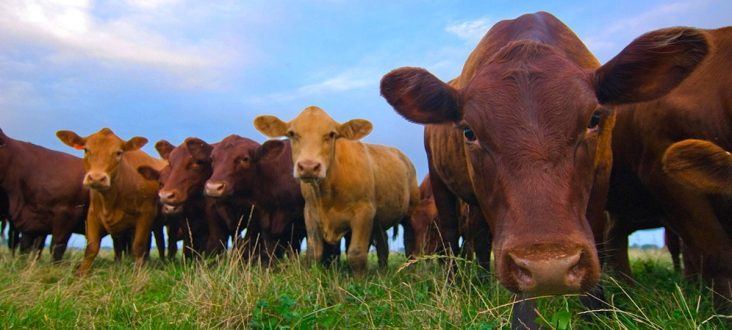Cattle herds plummet nationally as slaughter cattle sales in Arkansas balloon
by July 26, 2022 4:50 pm 3,849 views

The first tangible signs that the beef cattle industry in Arkansas is retracting are now visible. Cattle farmers throughout the South and West are culling herds, according to the U.S. Department of Agriculture’s National Agricultural Statistics (NASS) report.
As of July 1, there were an estimated 98.8 million head of cattle nationwide, a 2% drop in total from 2021, the report states. It’s the lowest cattle inventory level in the U.S. since 2015 when the industry endured a severe collapse during the fall of that year.
Cows and heifers that have calved numbered 39.8 million, a 2% drop since last year. There were an estimated 30.4 million beef cows in the U.S., which was also a 2% drop.
Drought conditions have spread throughout the South and West and now are impacting nearly every state in the country including Alaska and Hawaii, according to the U.S. Drought Monitor. In Arkansas three counties – Fulton, Sharp, and Randolph – are classified as D3 or in extreme drought. The only category that is worse is D4 or exceptional drought.
Every county in northern Arkansas is either partially or completely in phase D2, or severe drought. The number of counties in this category extends deep into central and west Arkansas – the heart of the state’s cattle industry.
Nearly half of the state’s pastures are classified as in poor or very poor condition, according to NASS. Many cattle farmers feed their livestock hay from these fields and when there is no more hay many will have to sell parts of their herds to cut losses.
For the first 30 weeks in 2021, 20,942 head of slaughter cattle went to auction. This year that number rose more than 20%, to 25,033, according to the University of Arkansas Agriculture Extension Service.
“The report confirms another year of beef cow herd liquidation with little evidence of anyone looking to expand,” James Mitchell, extension livestock economist with the University of Arkansas System Division of Agriculture said. “Regionally, drought pressure this month has been a big concern in the Southeast. The effects of drought are shown in the auction data. For example, auction receipts for Arkansas show a 20% increase in slaughter cattle sales.”
Mitchell said the national numbers slightly exceeded expectations, however. For months, experts in the industry had warned of extreme drought conditions.
“While inventories posted a year-over-year decline, National Agricultural Statistics Service estimates were higher than pre-report expectations, with analysts expecting larger decreases in cattle numbers,” he said, adding that the NASS estimates were not a significant departure from pre-report expectations.
“Drought has been the main factor contributing to the decline in the number of beef cows and replacement heifers,” Mitchell said. “Total beef cow slaughter through June is 14.6% higher year over year.”
